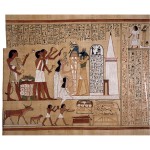Edition - April, 2012
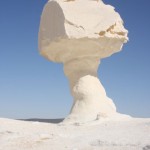
Book Review: The Oases. Egypt Pocket Guide.
The Oases is one in an excellent range of pocket guides to various parts and periods of Egypt. They are all characterized by beautiful photographs, excellent maps, site plans and illustrations and informative text that guides the traveler through the temporal, geographical and cultural space under discussion. [more…]
Edition - March, 2012
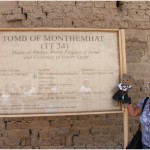
Lecture Overview: ‘Massive, Complex, Beautiful, Hidden’ by Chris Naunton
With fellow member of Sussex Egyptology Society, Amena, we made it to Chris Naunton’s talk to the Sussex Archaeology Society at the University of Sussex in Brighton on 15th March 2012 . Once inside the venue, we found a superb lecture theatre with a welcoming and enthusiastic audience. Chris called his illustrated talk Massive, Complex, Beautiful, Hidden. His title described TT37, the Tomb of Harwa at South Asasif, Western Thebes where Chris has been involved over 4 seasons. [more…]
Looking for a hieroglyph teacher, south coast, England
We are looking for someone to teach a small group of people on the south coast, working through Collier & Manley. Geographically between Worthing and Portsmouth! Can anyone help? Regards, Pat Kennedy [more…]
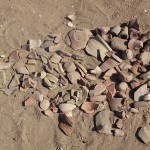
Documentary Overview: The Vanished Capital of the Pharaoh
By Andrea Byrnes, published on In Brief, Egyptological, 18th March 2012 The Vanished Capital of the Pharaoh (In the series ‘Lost Cities of the Ancients’) BBC4, March 15th 2012. 2000-2100. Narrator, Mark Halliley, Series Producer, Dan Clifton Writer, Mark Everest Featuring Manfred Bietak, Edgar Pusch, Aidan Dodson Introduction Figure 1. Map of the […] [more…]
Edition - February, 2012
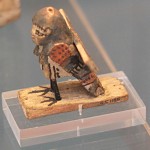
Editorial – Journal Edition 3 and Magazine Edition 4
Welcome to our latest editions of the Journal and Magazine sections. There is a great mixture of topics, which we hope will provide something for everyone. In the Journal section Kate Phizackerley has brought together the results of two excavations in the tomb of Horemheb in the Valley of the Kings, separated by nearly a century, […] [more…]

Introduction to the Contents of Tomb KV57 (Horemheb)
KV57, Horemheb’s royal tomb in the Valley of the Kings is famous for its bright decoration but it has yielded a large number of artefacts. The tomb has been excavated twice by Theodore Davis after he discovered the tomb in 1908 and a century later by Geoffrey Martin. This paper brings together findings of both excavations to show that the tomb originall contained an assemblage matching or surpassing that found in KV62, the tomb of Tutankhamun [more…]
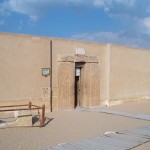
Notes in the margins of the scene termed “rendering accounts” in the mastaba of Mereruka
The mastaba of Mereruka, called Meri, is located at Saqqara, near the pyramid of Teti, next to the pre-existing tomb of his colleague, Kagemni. Both acceded to the post of vizier during the reign of Teti, at the beginning of the 6th Dynasty. The vast building is divided into three parts, sheltering, besides the deceased, his wife Seshseshet (daughter of Teti) and their daughter Meryteti. Those who visit the tomb cannot fail to notice, at the beginning of the circuit, a scene decorating the lower part of the left wall of the long passage that leads to section A reserved for Mereruka. [more…]
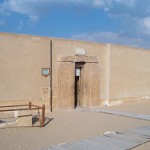
Notes en marge de la scène dite «de reddition des comptes» dans le mastaba de Mererouka
Le mastaba du Mererouka, dit Meri, se situe à Saqqara, à proximité de la pyramide de Teti, jouxtant la tombe préexistante de son collègue Kagemni. Tous deux ont accédé au vizirat sous le règne de Teti, au début de la VIe dynastie. Le vaste bâtiment se divise en trois parties, hébergeant outre le défunt, son épouse Seshseshet (fille de Teti) et leur fille Meryteti. Ceux qui ont visité la tombe n’auront pas manqué de remarquer, en début de parcours, une scène décorant la paroi gauche, dans sa partie inférieure, du long passage menant à la section A réservée à Mererouka. [more…]
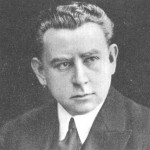
Arthur Weigall: A Man Out Of Time – Part 1
In this article, I will explore the contributions that Arthur Weigall (figure 1) made to the field of Egyptology. I knew of Weigall’s involvement as a reporter during the excavation of Tutankhamen’s tomb by Howard Carter, and his open criticism of Carter and Carnarvon’s exclusive reporting agreement with the Times, but later discovered that he had already had an impressive career in Egypt. That in fact by the time he came to cover Carter’s discovery his career in Egyptology was already over and he had not returned to Egypt in over nine years. [more…]
 By
By 